It has taken me far too long to finish this. Stretching is such a big part of circus and it’s been gnawing at the inside of my brain for quite a while now. Digging into the research on stretching and mobility has led me down the rabbit hole…and then last weekend, I attended Dave Tilley and Rupert Egan’s Maximizing Flexibility and Strength for Gymnastics seminar, which served both to reassure me that I’m on the right track and to give me even more to think about…
All of which has made this post into a rather lengthy thing that I’ll split into a couple of separate posts (because who wants to read all those words in one sitting?).
And then, over the course of writing this, life in the world got crazy. I must confess to having become rather distracted by the goings-on in our world. And for those still able to perform, the show must go on, for many reasons not the least of which is to help us all to process these experiences. And since my goal here is to help those who perform to keep their bodies healthy and strong for the long haul, the writing must go on as well.
So, we have a few unanswered questions on the table from my last post:
How do you progress from the true hip flexor stretch when working towards a split?
Isn’t some degree of lumbar extension inevitable when you move into a split? and What about things like the firebird leap?
What if you’re already able to go flat as a pancake into splits? How do you stretch your hip flexors then?
All of these questions circle us back to something that’s been wiggling around inside my head for quite a while now. The thing is, there aren’t necessarily quick, easy answers to these questions.
The more I think about it, the more I consider the evidence—from research studies and from my own experience with trainees—I’m just not convinced that stretching, as its typically performed, works very well.
Perhaps a better way of putting it is that I think there’s a disparity between when/why/how we stretch and what many of us are hoping to get out of it.
Get comfy. I’ve been trying to pare this down, but brevity just doesn’t seem to be my thing.
Alwyn Cosgrove and Lou Schuler wrote The New Rules of Lifting for Abs in 2010 and its follow-up, The New Rules of Lifting for Life came out in 2012. These books were among the first to introduce the general public to core strength and to emphasize its importance in not only developing strength and improving performance, but also in long-term health and injury prevention. In short, the goal was to provide the everyday gym-goer with tools to help them move better and get stronger while avoiding the sorts of training errors that create stresses to the body that, over time, lead to injury.
Essentially, as the title suggests, these were workout programs for life—meaning, aimed at meeting the demands of life, so that people can continue to lift for life.
Circus for life
The goal of this current conversation is to bring additional pieces of the puzzle to your attention so that you can make more informed decisions about how you train and teach so that you can minimize injury risk—now and over time.
In order to be an active participant in circus over the long term, you need to take care of your body. A part of taking care of your body necessarily involves training smarter more than training harder.
The aforementioned puzzle pieces that contribute to smart training include (but are by no means limited to):
- understanding the anatomy involved (ie, functional anatomy as opposed to the ‘memorize the origins, insertions and actions’ anatomy),
- basing practice on the best available science/research,
- tailoring training based on the individual body in question and the demands of the particular activity being trained for (in this case, circus-y activities).
Because circus places some pretty hefty demands on the body and the more we use the above to inform our considerations of risk vs. reward with respect to training decisions, the better off we’ll all be.
So how do you progress the true hip flexor stretch if you’re working towards a split?
Actually, there are a few things very worth considering—and doing—before worrying about stretching. (To be clear, this isn’t to say don’t stretch…but it might be don’t stretch just yet).
Before we talk about progressing the stretch, let’s talk about the athletes who already have flat as a pancake splits.
Hi there, bendy people!
Please take a moment to check yourself:

The fact of the matter is that if you’re on the upper end of the Beighton scale (7 or higher), it means you have inherently poor static stability in your joints (the passive constraints are just plain looser for you folks). That means that you need to have awesome dynamic stability and, chances are, static stretching is just not a good idea for you.
What I mean by that is that stretching when you already have an above-average degree of laxity in your joints is only going to exacerbate that laxity, creating instability (which is just plain unhelpful for long-term joint health).
Not to worry, though. The rest of this post still has plenty of stuff that’s applicable for you.
[Note: managing hypermobility for circus artist/athletes is a topic I’ve written about before (here) but it deserves revisiting, so more on this soon.]
Now, on to progressing the stretch…
As to methods there may be a million and then some, but principles are few. The man who grasps principles can successfully select his own methods. The man who tries methods, ignoring principles, is sure to have trouble—Harrington Emerson
I have a number of thoughts I want to share on this idea.
But first, we need to get a couple of things out of the way.
First:
At no point while you’re working towards your split should the glute on your rear leg be off. It needs to contract in order to keep your hip joint centrated.
Joint centration refers to positions of optimal congruency (in this case, meaning the ball and socket fitting together well) and ideal balance from the muscles acting on the joint (and in this case, that balance can’t occur if the glute isn’t participating).
For clarity, if the glute isn’t playing its part in the effort to keep your hip joint centrated, then the head of the femur gets to move around inside the socket a bit more than is ideal. This instability can, over time, wreak havoc on things like your hip’s labrum, cartilage or capsular structures.
And…
At no point while you’re working towards your split should your core be disengaged. In the bigger picture of your body, core stability is kind of like the magical center of everything: with a strong, stable core to make your lumbar spine feel secure, your nervous system allows your hips to be more mobile.
Before we go further, we should talk about what happens when you stretch…
For the purposes of this conversation, let’s say the goal is to do a front split. When trying to perform a front split, you feel some tightness in your hamstrings and in your hip flexor area. Possibly even through your quads.
So you stretch them.
Based on the available research, a static stretching routine where stretches are held for somewhere around 30 to 45 seconds does appear to result in (modest) increases in range of motion that last at least a day. (Geek out here, here and here).
The thing is, when looking at what happens to muscles as a result of stretching, they don’t actually get longer.
[There are rehabilitation scenarios where a therapist will administer low-load, long-duration stretches—somewhere in the 10-minute range and up—to stimulate actual tissue remodeling in order to restore joint range of motion, but this approach is not recommended for those wishing to increase their flexibility because you probably don’t actually need to make your muscles longer].
What does happen is the muscle’s resistance to stretch lessens. This mean the amount of stretch a muscle can undergo before a stretch sensation kicks in become greater. (I hope that’s not too confusing).
The key here is that this reduced stretch-resistance is transient.
A bout of stretching can essentially create a (temporary) reduction in how much tension you feel in your muscles.
But for many, the tension returns the next day.
Tone: the resting state of partial contraction of a muscle.
The question we should be asking is why?
Why is your hip flexor/hamstring/fill-in-the-blank muscle tight in the first place?
When you stretch, the sensory input from the stretch sends a signal to your nervous system that triggers some degree of relaxation of that muscle.
(Reduction of tone is more accurate, but you get the idea).
But for many who stretch, that reduction in tone is a temporary one.
(It’s very likely temporary for everyone who stretches. This is a part of why people end up stretching again the next time they train. The tightness from the previous training session comes back.)
Why is that?
Why can’t we all just do a full front split?
There can be many reasons.
Thing 1) your anatomy
For many circus artist/athletes, full front and side splits are the goal. For those who are working towards these goals, it’s worth mentioning a couple of things.
Everyone’s hips are actually anatomically different. You can find a great article (with great photos to illustrate) here. Even if you just look at the pictures, you’ll see that there is quite a variety of individual differences in terms of orientation of the femoral head on the femur and the angle of the ‘neck’. And then there’s the acetabulum (socket). It can vary in terms of orientation (whether it’s angled forward or backward) and depth.
And it can be different from your left side to your right side.
The individual combination of these factors in each of your hips can have an impact on just how much flexion and extension (and internal and external rotation) your hips have the potential for.
If your hip socket (acetabulum) is angled forward, chances are you’ll have more hip flexion range than hip extension. If your acetabulum is angled more to the rear, it’s reversed. There’s a happy middle ground and the most bendy folks out there tend to live right there.
So not everyone will get there and not everyone will be the same on both sides. Some people’s hips just aren’t well-suited for full straddles.
Either way, as you progress towards whatever version of a split your body can do, it’s important to be mindful of your anatomy and remember: alignment counts (see notes about glute squeezing and core engagement above).
Sitting there holding a split for more than 30 seconds may not be doing much to help you develop flexibility that will stick, but it is useful for feeling good alignment and getting your nervous system used to the idea of being there.
It’s worthwhile noting that many who started gymnastics and dance and circus while young (with skeletons that were still developing) end up with morphological adaptations to their hips (and possibly also shoulders)- meaning their bones end up developing into shapes and orientations that facilitate greater range of motion than the rest of the population. (Geek out here).
One of the practical implications of this is that when you’re working into the limits of your current flexibility, if you feel a pinching sensation right in the joint, it’s possible you could be pushing into a bony block.
Pushing into bony blocks is not a good idea. It could stimulate bony over-growth (which would ultimately reduce your range of motion even more), contribute to instability in the joint and/or irritate things like your labrum, ligaments or cartilage.
What follows are a series of self-assessment videos from Dean Somerset. Your best bet for figuring out the shape and orientation of your hip socket (along with your femoral head) is an x-ray. Since coupons for those are rare, an assessment by a professional is the next best option.
If you suspect your anatomy may be a limiting factor for you as you work on your flexibility, the smartest thing you can do is have a professional evaluate you.
Thing 2) your nervous system
At the risk of really over-simplifying, if a muscle feels tight, it’s because your nervous system said so.
Your nervous system is really very clever and particularly motivated by the idea of keeping your spinal cord safe.
Let’s use the aforementioned improperly performed hip flexor stretch as an example. Over time, that can result in the ligamentous structures of your hip being stretched out. That creates some instability in your hip. Not good, says your nervous system (because an unstable hip joint is ultimately perceived as a threat to your spine). And voila! Protective tightness in your hip flexors results as your nervous system tries to make your hip joint more stable.
Similarly, if you happen to have some extra anterior tilt to your pelvis—common among gymnasts and circus artist/athletes. Your hamstrings attach to the back/bottom of your pelvis. When your pelvis tips forward, it creates tension in your hamstrings by lengthening them. Muscles, being simple in nature, often respond to stretch with tension. Excessive anterior pelvic tilt also shifts the weight of your torso ever so slightly forward. Your nervous system interprets this as we’re going to fall over! The result: ‘tight’ hamstrings.
In the pursuit of greater flexibility, you can, of course, try to overpower your nervous system and stretch those tight muscles anyway…but routinely applying excessive stretching force to a muscle that your nervous system wants to be tight puts a lot of stress on a muscle. This tug of war can easily lead to tendinopathy.
So probably best not to get all aggressive with stretching just yet. First, we should make sure your nervous system feels safe.
Dave Tilley has written about reducing protective tone in a nonthreatening way that basically allows your nervous system to become “comfortable” with the idea of allowing you to expand your functional range of motion.
This is the idea I’d like to explore next…in part two (which I’ll post soon).
-Mike

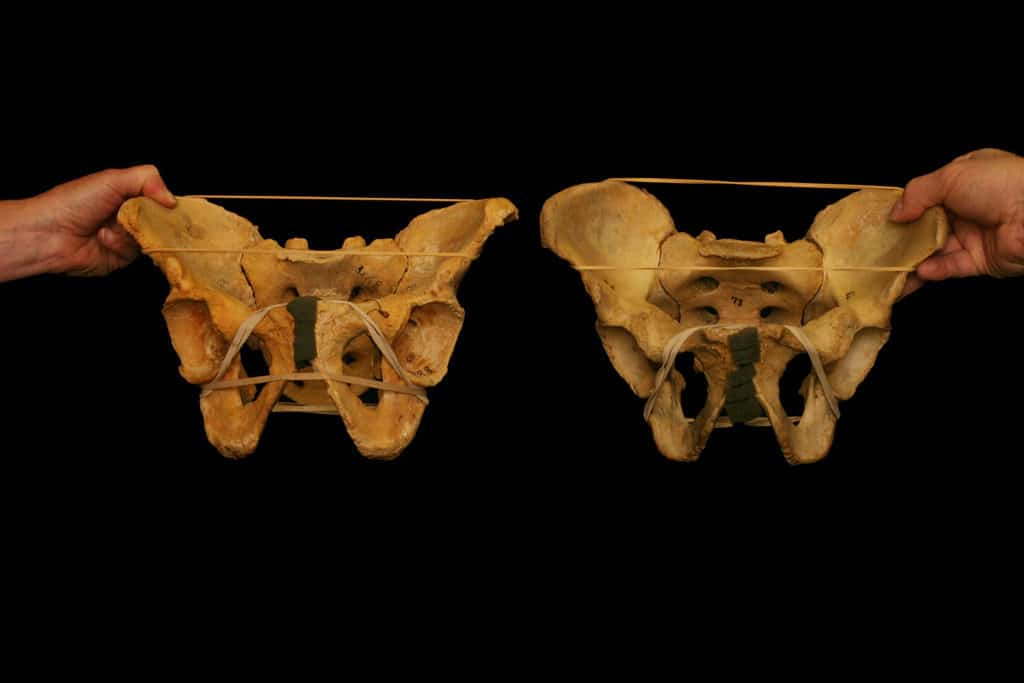
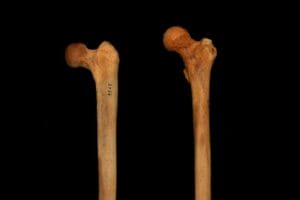
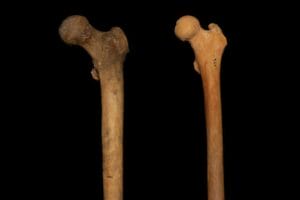

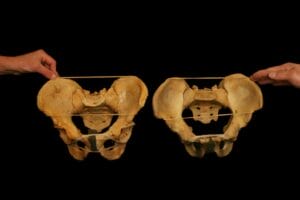
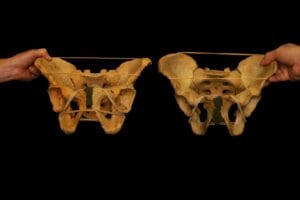
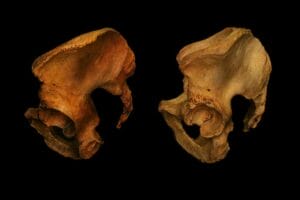
Pingback: Things that have me rethinking flexibility, mobility and stretching (part two): breathing for better circus | Get Circus Strong